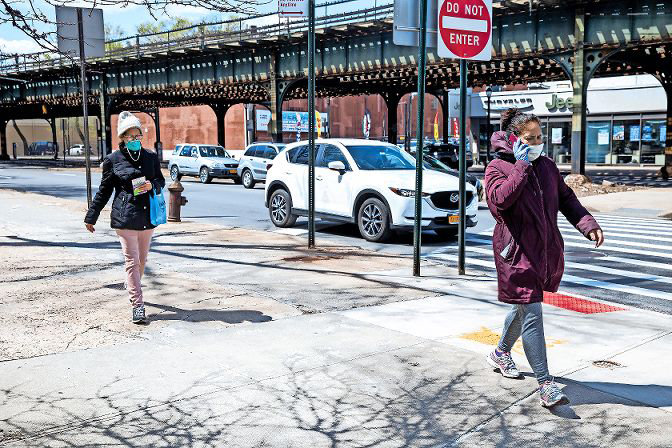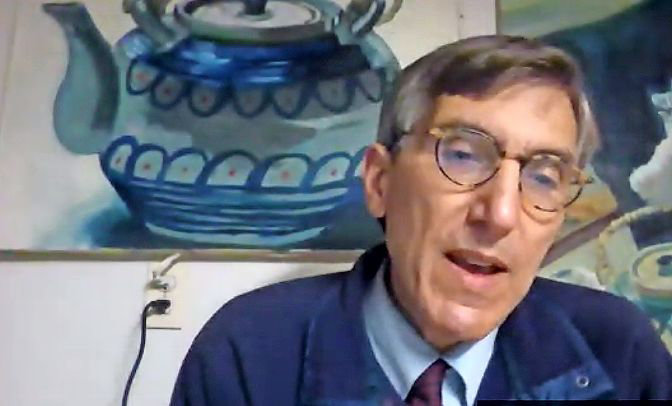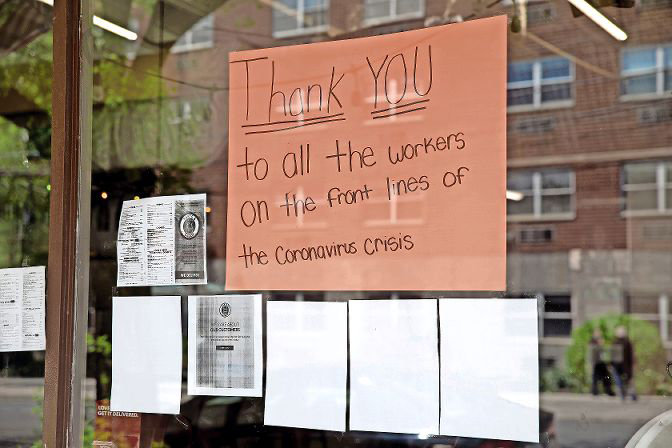Vaccine coming, but ‘new normal’ still here
FDA doctor warns there's still a long road left to reach the end of this pandemic
It took the United States nearly 100 days to produce its first 1 million confirmed cases of SARS-CoV-2 infections, hitting that mark on April 28. Today, the country is adding that same number of cases every six days.
America is well on its way to reaching 13 million cases by Thanksgiving, as deaths related to COVID-19 complications number above 1,000 each day. Even New York, which appeared to have been long past the worst of the initial outbreak, is starting to see numbers climb as government officials contemplate what might have to shut down to prevent the virus spread from spiraling out of control.
There is light at the end of the tunnel — it’s just a lot of tunnel left to traverse before we reach the end. Two pharmaceutical companies, Moderna and Pfizer, have boasted far-better-than-expected trial results for their vaccines, meaning we could be getting closer to finally defeating the coronavirus.
Yet seeing life return to normal is something that will still take months, even after the first group of people get vaccinated. That’s according to Dr. Peter Marks, director of the Food and Drug Administration’s Center for Biological Evaluation and Research.
Marks made a virtual stop at Community Board 8’s health, hospitals and social services committee last week, sharing optimism, but chasing it with a strong dose of reality.
“I think that the first availability of the vaccine under emergency use authorization is matter of weeks away, probably several weeks away,” Marks told committee members.
Even when it does roll out, it won’t be available to everyone, he said. In fact, it won’t be available to most people. It’s likely the Centers for Disease Control and Prevention will have to create a priority list on who gets the vaccine before others. And even when that process starts, it could take up to a month — and two separate doses — before the typical person is fully shielded from the coronavirus.
“Your body has to build up the antibodies, and that takes time,” Marks said. “There is a limited amount of vaccine right now, so it’s possible the Centers for Disease Control may decide to make a recommendation on who should get vaccinated first. Maybe health care workers should get the first available vaccine, or people in long-term nursing facilities. Can’t say for sure, but some of those groups have been talked about.”
Wider-spread availability of the vaccine won’t come until the end of January at the earliest, the doctor said, but reaching true herd immunity is going to require at least three-quarters of the population to either be vaccinated, or develop their own immunity from a past COVID-19 infection.
Hitting those numbers in terms of vaccine won’t be easy. The coronavirus has become a political football for many, with some even going as far as claiming the disease itself is a hoax. On top of that, many distrust vaccines, whether it’s a belief they don’t work as advertise, or some of the fringe groups who claim without any proof that vaccines cause more harm than good.
A big part of that problem comes from the fact that many — especially those younger than 40 — have never seen a vaccine in action.
“The problem with flu vaccines is that, even in a good year, they are about 50-50 effective,” Marks said. “People have always been, ‘I got the flu vaccine, but I still got the flu.’ But your flu probably wasn’t as bad because you got the vaccine.
“But here you have a vaccine (for the coronavirus) that is much more effective, and is more effective on a disease that is at least 10 times more lethal. We have to do what we can to educate people on how important it is to get this vaccine, not just for you, but for your community.”
The FDA and CDC are looking at ways that might be the most effective to convincing doubters to get the shot. One idea is to first target those many people trust like primary care doctors or religious leaders. Another approach, Marks said, could be to target a smaller neighborhood, create herd immunity in there, and then show how reaching those vaccine levels can return any community back to pre-pandemic normalcy.
“Many people in the modern era have not seen what a vaccine can do,” Marks said.
“We don’t know what smallpox looks like anymore. Many people under the age of 40 don’t know what measles was like. I still have the scars on my forehead for measles and rubella.”
If everything checks out with the Moderna and Pfizer vaccines, people can expect effective rates as high as 90 percent, Marks said. Even those in the unlucky 10 percent who ultimately contract the coronavirus will likely suffer far milder COVID-19 symptoms because of the vaccine.
The only major side effects so far are fatigue for some, and headache for others. Both seem to go away quickly, for the most part, or are easily treated with over-the-counter medication.
The biggest question mark, however, is whether the vaccine will last long enough in our bodies to knock the virus out for good. In order for that to happen, Marks said, our bodies would likely need to build defenses for at least five months after that second shot.
“I really think we can do it,” Marks said. “That’s really an achievable number.”
But until then, it’s important for everyone to continue wearing masks, washing their hands regularly, and maintaining social distance, the doctor said. And that might continue to be our normal well into spring. Especially since anything could happen in the next weeks and months that could change everything.
“What I am a little bit nervous about, what I don’t have the answer for, is how are we going to make sure that the ‘last mile’ is all taken care of,” Marks said. “The administration will probably have to make sure that we are all aligned getting the vaccine from the distribution center, to the clinic, and into the arms of people who need it.
“We really have to work together, but I do think it’s going to be an uphill battle.”















